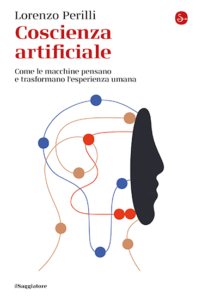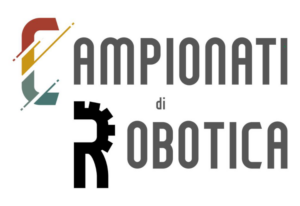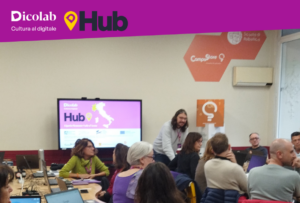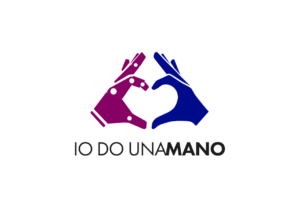
Lorenzo Perilli: Generative Artificial Intelligence. How have we come so far?
Lorenzo Perilli, Director of the Department of Literature, Philosophy and Art History at the University of Rome Tor Vergata, is a philologist and historian of

Robin Williamson (School of Robotics) has interviewed Simi Wang from Keenon Robotics in Shanghai, and Luca Talevi from Holosafe in Italy. The interesting and rich discussion pivoted around the issue of the acceptance of service robots by the public, and how to inform the customers about the usefulness of robots in the pandemic.
SIMI WANG: We are a robotics company based in Shanghai, founded ten years ago. In the COVID pandemic we could provide robots helping humans, especially with our disinfection robots that we are now commercializing all over Asia. One of our robots is now working at Malpensa airport. Our robots are keeping the common areas safer for the public.
LUCA TALEVI: I am here for Holosafe, but you have mentioned Vibre, which brings me at an important point. Vibre design and commercialize neural interfaces for business neural and we are encountering not much a technological problem but of implementation and acceptance. One of the major problems in offering robots to assist humans in the pandemics is public acceptance. Holosafe employees are architects, engineers, psychologists, anthropologists, epidemiologists who together design processes and protocols to accompany, support, and optimize the use of technology. And of robots.
In the pandemics of COVID it became clear that not only technology was important, but the human factor in accepting it: smart and remote work needed platforms and software are to be made possible. Neurotech technologies are being used in many fields. Of course, it is easier in technological fields. For instance, we are working with sports, with racing teams who are looking for high performance, and it easier for then to accept neurotech because they fear losing the most. For us, the real point is that people have to feel better, in whatever activity there are working, and in this neurotech could be supportive. Of course, also performance is improving, but it is a co-factor of people feeling better.
SIMI WANG: Perhaps, the most common problem in intruding robotics in China is the concern by people about job displacement caused by robots. But our idea is not about robots replacing humans but to offer intelligent tools. Sami Wang talked, as an example, about vacuum clears robot that at the beginning opened up some doubts and suspects. Robots are replacing the more boring part of the job, leaving to people some more creative activities. Out “waiters” robots deliver dishes, are punctual, and obey orders. Human waiters stand in the front area and talk to the customers. After deploying our robots in restaurants, we found that the employees were happier, this attracted more customers and they did not lose any jobs, on the contrary, restaurants hired more people. New ideas take time to be accepted and implemented.
From the security and safety point of view, our robots are redundant of sensors of actuators, so if one gets broken, there are other parts that can perform the same task. Our robot must have a very sharp and well-designed navigation control, because they have to navigate, to move, in restaurants, in the middles of humans that are also moving. This is one of the most important parts of our robots. In the past problem came out when robots were less developed, and they broke down often, or it occurred manpower to run them. Our principle is that one does not have to take care of the robots, robots have to perform their mission autonomously.
In terms of Roboethics issues, our robots do not present any, because they don’t collect any data from the customers. The restaurant themselves, they keep ta data about how many meals served by bots and which and when, but they have all interest in keeping the data confidential. We think that it is the way in which we deploy robots that can have a special effect, positive or not. Robots are machines, are very sophisticated tools, but always tools, and we don’t have to compete with them, we created them to support us.
There is an interesting application of our robot, in a cafeteria in Korea. They combined the robot with the robotics coffee machine, so when coffee is ordered the robot waiter goes directly to pick it up, ready, because the robot machine has already done it. Robotics cooperation.
LUCA TALEVI: Recently we collaborated with an important retail company of electronics because he wanted to have a group of robots in their shop, all day long. They wanted 20 robots in a single shop. We advised them to change somehow their plan (all these robots could have scared, or disturbed their customers) to have a smaller number of robots that were just close to the entrance, doing their jobs and from time to time moving in the shop. It is an interesting case because this owner did not know how to make this technology accepted.
In terms of Roboethics, also we don’t have any particular problem. But I would like to stress that in our philosophy robots must appear as they are, machine, performing their mission – that must be also clear to everyone.
Simi Wang, 23, director of global sales at Keenon Robotics. She has been interviewed by CNN, The Spoon, Mena Tech, Condé Nast, The robot reports…etc. She is an influencer in AI, robotics, technology and businesses. Recently she works with Keeon’s distributors in the US, UK, France, Spain, Hungary, Canada, UAE, Saudi Arabia, Japan, Korea, Singapore to bring in contactless and disinfection solutions and help people to adapt with robots and new technologies.
Luca Talevi, Neuroengineer, deeply passionate about Intelligence and Human-Machine Empathy. He obtained his first publication about Brain-Computer Interfaces at 22 years old, still a student, and since then he has been actively involved in BCI research based on both invasive and non-invasive artificial intelligence. Acting as CTO at Vibre, he’s been spending a lot of effort in simplifying neurotechnologies in a way that can be both easily accepted and useful among businesses and the general public, learning an important lesson: simplicity and empathic communication are successful where the technological effort is not up to par. This lesson appeared even more important during the COVID-19 epidemic, when it became obvious that the non-acceptance of anti-epidemic technologies and methods is as important as the characteristics of the virus itself. Starting from his experience at Vibre, Luca decided to start the HoloSafe initiative with Raffaele Salvemini, CEO of Vibre, and other partners to help companies in the adoption and acceptance of high-tech systems capable of improving workplace safety.

Lorenzo Perilli, Director of the Department of Literature, Philosophy and Art History at the University of Rome Tor Vergata, is a philologist and historian of

The Italian initiative, promoted by the Ministry of Education and Merit, as part of the Robotics Championships project, aims to enhance students’ scientific and technical

Sold out for the first training day “Dicolab. Cultura al digitale” in Genoa. The 25 places available for the first two courses in Genoa sold

Io Do Una Mano ( I Give a Hand) is a non-profit organization with the goal of helping people – especially children – with congenital
Write here your email address. We will send you the latest news about Scuola di Robotica without exaggerating! Promised! You can delete your subscription whenever you want clicking on link in the email.

© Scuola di Robotica | All Rights Reserved | Powered by Scuola di Robotica | info@scuoladirobotica.it | +39.348.0961616 +39.010.8176146 | Scuola di robotica® is a registered trademark